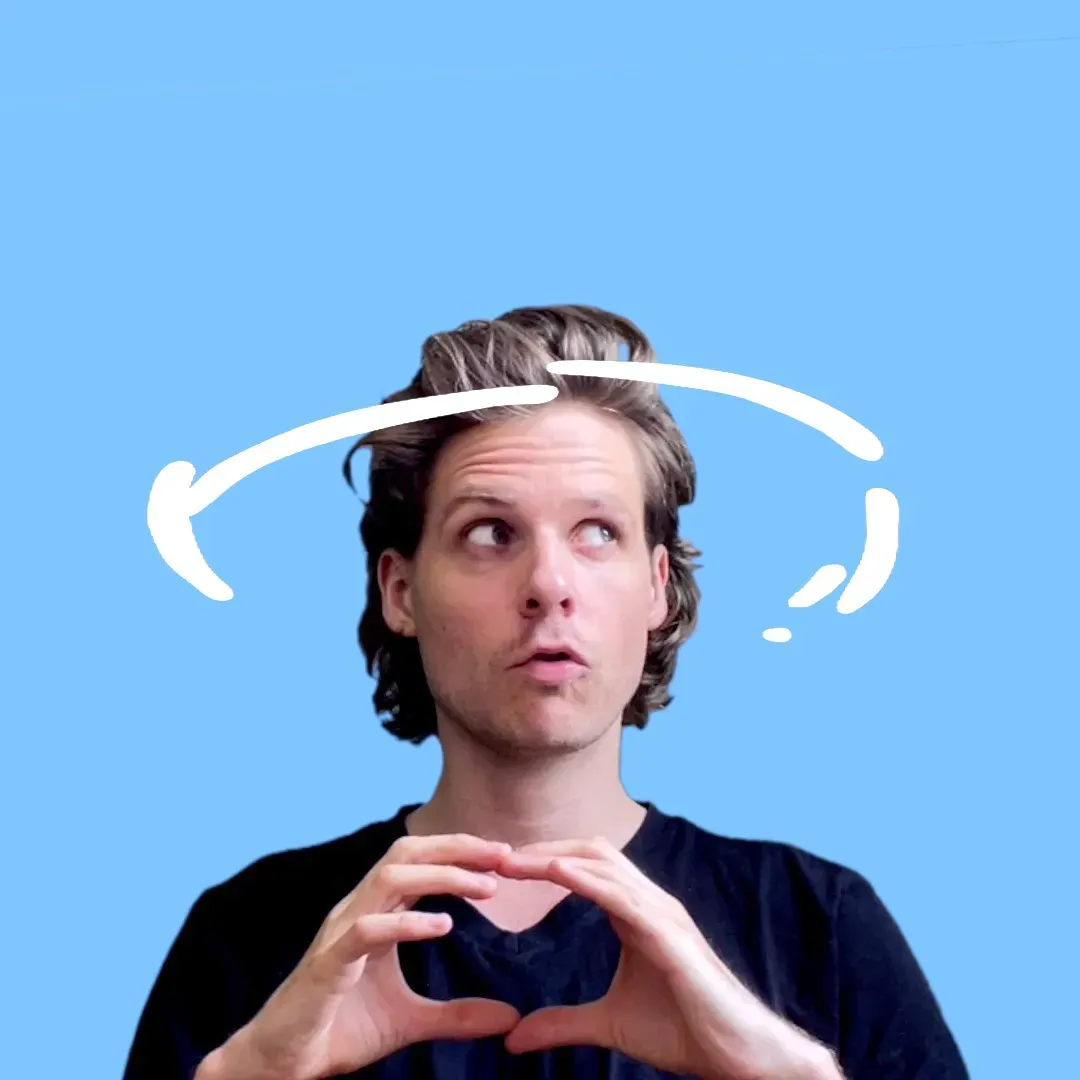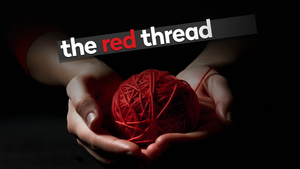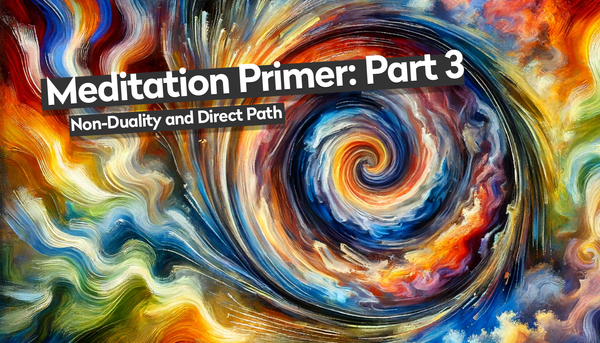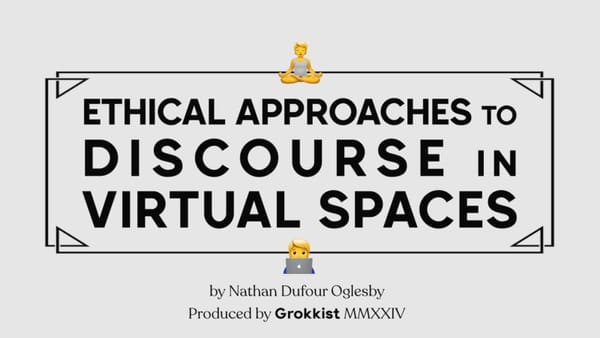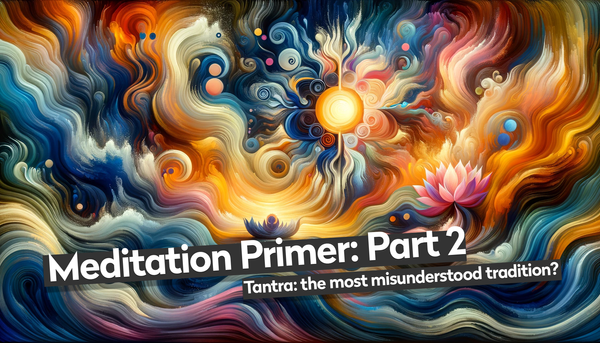An Essay in Radical Incompleteness
This essay chronicles my experience with OCD through a philosophical lens, and examines how “Process Philosophy” may offer a means of thinking one’s way out of overthinking. Part One deals more with my personal experience and offers a general introduction to the disorder; Part Two functions as a philosophical inquiry.
You can read/listen to this essay and watch the accompanying rap video below.
Part One: Obsession
1. Introduction
Some time in my mid-twenties, I became strangely preoccupied by the question of how many pushups I should do in a given session of exercise. This was strange to me because I wasn’t particularly concerned with getting myself into peak physical shape — I was (and am) an adjunct college lecturer by day and a rapper by night, and neither of these occupations inherently require massive pectoral fortitude. Nevertheless, it seemed to me extremely important — essential, even — to find the right amount of pushups, and do them daily.
The question is not in and of itself an unreasonable one — it’s something a personal trainer would be able to answer, and if I had had one, perhaps it would have been answered simply enough.
But I did not; and soon, the question began to take on a bizarre significance, an urgency that was totally disproportionate to, and distinct from, the matter itself. For I became engrossed with the idea that there was some essentially correct number of pushups — a sort of mystical number that I was desperate to discover, and failing its discovery, I was tortured by a feeling of incompleteness.
This sounds strange; and it was. I was rationally quite aware that no such magical quantity of pushups exists; nonetheless the thought itself, the empty form of the number, which no longer had anything to do with the exercise, repeated itself in my mind with relentless intensity. It became an obsession.
I did not know it at the time, but this was the beginning of my experience with a form of Obsessive Compulsive Disorder (OCD). Over the course of the near-decade since then, the object and nature of my obsession, and the compulsions associated with it, have had numerous variations, but have all along, as I now see, been that.
It’s strange even now to talk about their particulars. One’s obsessive compulsions, while of dazzling interest to oneself, like the details of an especially vivid dream from which one has just awakened, remain solipsistic, anomalous, and difficult to share.
The reason I’m sharing them now though, is in the hope that by being revealed, in all their idiosyncratic detail and lurid arbitrarity, they may help someone who’s in a similar state of confusion. Also, they provide the necessary backdrop for a broader story, and a larger point: about the concept of obsession itself, not just psychologically but philosophically — and what certain philosophical considerations may offer for thinking one’s way out of the besiegement of thought that obsession is.
The philosophical theme is rooted in a synchronous circumstance from my own personal history. My OCD first arose, in its most acute form, at the same time that I was working on a doctoral dissertation on the topic of Process Philosophy. “Process” thought, which emphasizes the fluid, non-static nature of all things, critiques traditional philosophical outlooks which posit some “ultimate reality” behind all change — a transcendent reality that is eternal, static and perfect. This idea is a prominent one in the Western tradition; and Process philosophy basically accuses it of having been, for millennia, problematically obsessed with perfection.
So there I was, diagnosing the Western philosophical canon with an acute case of “pathological obsession”; and in the meantime my mind was turning on obsessive thoughts of its own, with a pattern and repetitiveness that I did not yet know to recognize as OCD.
It would be gratuitous for me to declare, and untrue to claim, that “philosophy” itself has single-handedly rescued me from the labyrinth of my disorder, and that I am now cured. But I can say that my perspective on the condition has fundamentally changed for the more hopeful, peaceful and harmonious — and that this change in perspective has been directly informed by philosophical ideas.
In short, I’ve come to feel that my escape from obsessive thoughts consists in the very acceptance of their existence. I must let them come, and let them pass away. This is no different from what many therapists would say, or encourage someone to realize, as in fact mine did.
But I was not able to actually understand this acceptance, until I came to perceive that there is something inherently obsessional about the very nature of thought itself, and perhaps even that of reality — form itself has the character of fixation. Things come to be, and pass away again. Obsession is the excessive fixation on that which must be allowed to pass — from the contents of the mind, or the process of the universe. Thoughts are good; without them there’s no consciousness — but they must be let go, for consciousness to flow. Form is good; without it there could be nothing in material existence — but the forms of things must be allowed to change, beings must be allowed to pass away, matter itself must flow.
My OCD fixation on various patterns, practices and decisions — my obsession with the completion of my rituals, in their proper form — has been analogous to ideological obsessions with categories like “the perfect”, “the essential”, “the ultimate and unchanging” in the history of thought. Thinkers have not been wrong to yearn for the absolute, or to try to articulate the unvarying truth — but when this yearning becomes pathological, or that truth becomes tyrannical like an immovable thought, it obscures the main fact of the experience of the universe: that it’s a process, a process which is inherently and forever incomplete.
So while I’m not saying that a little Process Philosophy¹ is all you need and you can leave the drugs at the pharmacy — whether it be for OCD, anxiety, depression, bipolarism or any other psychological problem — I am saying that our therapeutic techniques for dealing with mental illness, and our philosophical inquiries into the nature of the mind and the cosmos, may well belong to the same department when it comes down to it, as indeed they did when those disciplines first began.
2. A Peculiar Compulsion
Obsessive thinking may confront all of us on occasion. We may encounter an “intrusive thought” that won’t let us alone, foisting itself into the otherwise scheduled programming of our moment. It appears like a pop-up window in the midst of your work-flow, infuriating you in proportion as it continues to pop up once you’ve closed it.
Sometimes such a thought can take on massive significance, totally disproportionate to the actualities of the situation, and become resistant to all conscious attempts to control or ignore it, recurring in constant iterations over days, weeks, months and years. Instead of closing properly, the window drags across the screen in recursive duplications of itself like a psychedelic accordion, and crashes the system.
When this happens — when the obsessive thought becomes uncontrollable and chronic — obsession becomes a pathology, which psychological discourse calls Obsessive Compulsive Disorder. This is when the technicians of the mind officially declare that the pop-up window is no mere annoyance which can be blocked by changing your settings, but is actually a bug in your operating system with no known cure. You have a problem.
My first such pop-up had to do with pushups. I would finish my daily workout, which regularly culminated in a set of them. But having concluded it, as I went about my day, I would be nagged by the persistent thought that that final set had not been done. Or specifically, that it was missing one, as though the jar of pushups had spilled a drop as I put it away.
The thought was like a foreign object in the mind’s eye. As I attempted to go about my other activities, it would resurface constantly, inhibiting my focus and tarnishing my mood.
There are many subvarieties of OCD, some of which are more readily associated with the term than others in the popular imagination. Probably the most stereotyped is the “contamination” kind, where the obsession centers on cleanliness or avoidance of germs; another is the “symmetry” type, which centers on the ordering of objects in space; yet another is the “checking” type, an obsessive concern with potential hazards to oneself or others, or with mitigating errors of any kind. Each of these obsessions tends to induce a specific action (the “compulsion”), as for instance repeatedly cleaning a surface, arranging objects in a certain order, or repeatedly checking the locks when one leaves the house.
My compulsion was having to do pushups throughout the day, to compensate for the phantom disappearance of the ones I had already done. Initially I thought I was just abundantly committed to extra credit exercise. But it soon became apparent that something else was going on.
I’d be in a restaurant, for instance, and would suddenly be taken by an intense conviction that with one extra pushup executed there and then, my workout from six hours before would at last be complete. This is an unusual thing to do in the midst of a dinner date. And so, driven by simultaneous urgency and embarrassment, like one excusing themselves to powder their nose, off I would go to the restroom — the public restroom of whatever place — check to see if the coast was clear, get on the floor of the toilet stall, and do a pushup, or sets of pushups. It was kind of gross.
Not only that, it was exhausting — as sometimes this process would be repeated numerous times over the course of an outing; and it was confusing, frightening even — because I did not know enough about OCD to recognize it in these idiosyncratic exertions.
There are many whose compulsions are much more unpleasant, inconvenient and damaging than this. But I’ve also come to understand that the suffering in OCD is not measured only by the extremity of the compulsions themselves, which may appear harmless — but in the intensity of the feelings which are attaching to them, whether they’re harmless or not. This is what makes it so difficult to communicate to others.
This went on for months, and then years, at varying degrees of intensity, and I kept the whole business almost entirely to myself, a minor grotesquerie in the shadows of my daily life.
3. Rituals
A salient feature of such compulsions is that they may assume the form of a specific set procedure, which has the character of a ritual. Checking appliances a prescribed number of times, handwashing in a certain ceremonial way — these are rituals. Even cycling through a certain sequence of thoughts, with no noticeable outward expression, may be a ritual. So is absconding into restrooms for clandestine calisthenics.
The action, which may have originally had its basis in some practical purpose, congeals into a formalism that then becomes an end in itself. This formalism may have arisen to manage the doubt associated with the original action — “If I do this precisely 20 times, then I can be sure I’ve done it.” But eventually that very sequence, that very number or order of operations, becomes the shape of the obsession itself. It resembles some cultural custom, whose usage continues even when knowledge of its origins has disappeared in the mists of time. “Why do we do that?” … “We just do.”
Hence, OCD is like superstition operating with the intensity of a religion.
As we’ll see, the analogy between OCD rituals, and religious ones, is significant. In both senses of the word, a ritual represents a sort of refraction point, where one’s sequence of actions has been disembodied from its practical application, and has taken on a symbolic power. Many chronic obsessions do themselves revolve around religious practices and beliefs.
Unfortunately for their faithful observers, these rituals themselves have a way of vanishing into obscurity. For even once we’ve performed them, the doubt about whether we have, may somehow transcend our certain knowledge of it. Hence, before modern psychology, OCD was commonly called “the doubting disease”. The smallest possibility that the ritual may not have been completed — even though we remember doing it — opens like a fissure, which can only be filled with further repetitions.
4. The “Master Ritual”
In my case, my doubts about my daily workout led me to seek that “essentially correct number of pushups” of which I spoke, a mystical quantity which I was convinced would set me free from all future doubts. I was like a religious skeptic driven by their very uncertainty into the heights and depths of theological inquiry. I was lost in the numerology of pushups.
If I do X amount, I’ll always feel the need to do one extra, such that each set would be theoretically infinite (n → ∞). Hence there must be some non-arbitrary number — could that number be my age? I could do 25 a day while I’m 25, 26 while 26, and so on — but can I really sustain that once I turn 80? 90? 100? Furthermore, what if I were on another planet? Would I reckon the number in Earth days, or relative to whatever planet I was on?
This may sound like a parody; but precisely these contemplations encircled my mind day and night. The moments when I was not thinking about them became increasingly few, and they cast all my other activities into a diffuse gray.
To make matters worse, a second obsession appeared: this was a sort of prayer, a special sequence of words, which had congealed from my poetic practice. This one I considered even worse, because unlike pushups, it revolved around something I actually cared about. It was spreading, I thought — the obsession had come for my art, the organ that pumped the blood to my soul.
At this point, my condition was transforming. On the one hand my compulsions were subsiding: I would go days or weeks without doing compulsory pushups or incantations, because I was focused instead on the meta-obsession of how to complete the rituals once and for all, through some kind of master-ritual.
One ritual to rule them all — but like the Ring, while I thought I could master its power for my own liberation, it was my ritual obsession that had mastery over me. For every time I tried to complete this final ritual, some previously unknown requirement would be revealed, which I’d failed to satisfy. Every time I thought I’d beaten the game, the rules had been changed — my adversary (myself) still held me in check.
During this time my depression exponentially deepened. I felt that in contrast with this, nearly any other pain would be more welcome, since at least it would be real, rather than a religion of my own making — a religion I now despised, and yet in which my faith was involuntarily unshakeable. For so long as the ritual was not completed, I myself felt achingly, inconsolably incomplete.
5. Pure-O
With this, my condition had shifted into a class of obsession called “Pure Obsessional”, or “Pure-O”, which is conceptually murkier because it doesn’t necessarily induce an associated compulsive act.
This category includes obsessions with certain questions or ideas, like the fear that one has done or will do some terrible thing, or fixations on certain decisions or outcomes. Because in these cases there’s no clear “C”, no externalization of the mental phenomenon, Pure-O can be harder to diagnose, and is even disregarded by some psychologists as being an OCD type. Also troublingly, Pure-O sounds like the name of an orange soft drink, a cleaning solution, or an erotic lubricant.
But while inherently more ambiguous, Pure-O shares important features with its more demonstrative cousins. Like them, it revolves around some extremely specific and intensive mental object, one which presents itself to the mind repeatedly no matter how many times one has addressed or resolved it. It can also manifest itself externally in its own way, since Pure-O sufferers will often find themselves seeking specifically formulated answers to their internal questions when in conversation with others. Some Pure-O thoughts have a violent character, or revolve around fears of committing, or having committed, some heinous act. But this is not always the case — it may also be something utterly arbitrary and functionally harmless.
Whatever they may be about, what sets these thoughts apart from everyday preoccupations of the mind, is the fact that they have been somehow dislodged from their original objects, and are now being iterated independently of one’s rational evaluation of things.
One may be consciously aware that the thing one’s obsessed about doesn’t actually matter, or that the item of concern has already been mitigated, or that the question cannot be answered, and yet the doubt, concern or question itself indelibly remains — an empty form, an endless echo.
Why does this happen? From a neurological perspective, there is still much to be determined in the research, and I’m not qualified to give a competent summary of what little is known. But in general, the problem seems to be that the prefrontal cortex, the part of the brain in charge of rational decision-making, and the ventral striatum, a deeper part of the brain that forms part of its reward system, have quite literally gotten their signals crossed.
The ventral striatum is part of the system that enforces and rewards our decisions, decisions which have been formulated by the prefrontal cortex. But now the ventral striatum has gone off the rails, and is enforcing and rewarding spurious formulations that have no bearing on practical reality. The deep brain is sending its pulses of animal intensity to the wrong ideations, imbuing them with a significance they’re not supposed to have. And so the thought that there is some ritual “perfection” attainable in a pushup, or in hand-washing, or whatever else, hovers before the mind’s eye with undeniable certainty — while meanwhile the rest of its rational faculties stand aghast at the absurdity of the whole idea. It is like a civil strife between the constituents of the rational and pre-rational parts of the brain; and the latter have rushed the capitol. The confusion runs deep.
6. “It’s Not You, It’s Your Brain”
After years of obsessing, and obsessing about obsessing, I finally googled my way into the realization that my experience was consistent with OCD, and I entered therapy. My therapist however seemed resistant to this diagnosis, and for a number of months we attempted to excavate the supposed trauma at the root of my ruminations.
Then one day she changed course altogether. Right at the beginning of the session she declared, “it’s not you; it’s your brain.” Before I had time to remark on the astonishing metaphysical suppositions implied by that statement, she had referred me to a psychiatrist so I could be prescribed drugs.
But prior to making that appointment, I got cold feet, and left therapy altogether. I resolved instead to take my chances with one last attempt at the final ritual. I would grit my teeth, do it once more, and never look back.
My plan was to include a radical new element: this time I would have to do it outside, and naked. This was significant, because I was living in Ridgewood, Queens, where my yard was in clear, amphitheatrical view of an entire block of neighbors’ windows. Obsession is a very private sport; but this finale would be visible to all. My reasoning was this: it can only be done naked for the first time once, and that’s something.
Out I went, at dawn the following morning, wearing nothing but my obsession, and did my ritual. In the moments that followed there was the familiar sequence of feelings — brief elation, then panic concern, then a general anxiety that I’d botched it again. But this time, I decided to hold onto it, to hold on to the uncertainty itself, and I doubled down on my resolve. I decided to consider that act, imperfect though it may have been, as perfect nonetheless, and inviolable, and holy.
I pulled the strings of my private religion and declared it a miracle.
Yet there was no occasion for rejoicing; for all I felt was uncertainty. But I held myself to it with white knuckles for a few weeks, until gradually, ever so gradually, it faded from the center of my attention. For the present, it was gone. I left my private religion and rejoined the laity.
Part Two: Process
7. A New Obsession
Not long ago however, it returned, though in much different form.
I had tasked myself with rebranding my artistic work under a new name. As I began the process, while I labored to convince myself otherwise, I could soon perceive the onset of a new obsession. The perception consisted in being simultaneously convinced of two contradictory propositions: 1) that while it was an important decision, at the end of the day any reasonable name would do, and 2) that there was a right name, legible in the secret places of my soul, and which would be confirmed as my destiny by a divine voice.
The problem, as you may have guessed, was that every time I made a decision, the bearer of the “divine voice” changed their divine mind, and demanded a different name. In this way, with each choice burdened by a changeful spirit of prophecy, I changed my artist name repeatedly on music distribution services, on social media, and in my heart. It was professionally disruptive and psychically exhausting.
With this, my obsession had at last completed its advance to the center of my selfhood. Its object was inherently public, while its content circumscribed my innermost identity — my name. It was at once more “real” — since it was about something that actually mattered to me — and as “illusory” as before, since it had the same mechanical repetitiveness, the same patterns of doubt, and the same paradoxical aspect of both mattering and not. It cast me into an even deeper depression than before, one from which I’m only recently emerging.
8. What’s in a Name?
Unpleasant as it was, I did find it significant — and therefore interesting — that it centered on the name. It was this consideration that began to open the philosophical path which eventually led me to a radical change in perspective.
Something about the significance of the name — of naming — seemed to get at the very heart of what obsession is.
Earlier, I defined obsession as an excessive fixation, the relentless orbiting of a fixed point. Now in a certain sense, we need to orbit a fixed point in order to think about anything, in order to reason. We need to focus the mind on a certain idea, for long enough and with sufficient intensity, in order to conceive of it and talk about it. We need to point the mind at it. This is essentially the function of a name — it is a gesture of pointing.
But at what does it point? This is where Process Philosophy enters the conversation. For its proponents would say that when it comes down to it, there is no certain thing there to point to. In the metaphysical sense, there is no thing, there is only process. Names are commonly held to designate things, but in fact what they refer to are processes, ongoing series of events.
When we make a distinction between a static “thing” like a mountain, or a human — and an event, like an explosion, or a dance — we are in fact using a conceptual shorthand that helps us refer to the world in a practical way, from our perspective. But ultimately all of these things are processes — continuous material processes, with myriad relational parts. A mountain is a coordination of geologic events, a human of cellular events, and each of them is reducible to atomic and subatomic events. The name merely points toward such a process and says “thing!”, gathering it for the sake of reference into a fixed designation.
The most classic illustration of this comes from the Greek thinker Heraclitus, in the 6th-5th Centuries BCE. He offers the following proverb:
“It’s not possible to step into the same river twice. We both are, and are not.”
We recognize a river as a “thing” for practical purposes, but at any given instant there are different water molecules coursing through it at any point, and so it’s not so much a fixed entity, as a series of events. The river exists, but not in any fixed way — it is, and it is not. The same is true for the groove of earth through which the waters run — over geologic time, even that groove is but a passing instant in an ongoing process, a part of a flow. “All things flow” is another of Heraclitus’ sayings; and in the broad sense “Process” thinking is simply the radical application of this principle to all phenomena, including ourselves.
Arguably, the Western philosophical tradition has gotten itself into some of its most intractable problems by confusing things with processes. A.N. Whitehead, the subject of the dissertation I was writing when my condition first arose, called this “the fallacy of misplaced concreteness.” This fallacy can cause metaphysical confusions, of interest to philosophers with and without OCD. But, like other philosophical problems, it can also have broader consequences for how people see the world.
If a philosopher is convinced that the universe is populated by things of a fixed and static nature, they’ll also have to account for why they have such a nature, and why things inherently are the way they are — the question of where they get their “thingness”, so to speak. The traditional way of doing this, at least since Aristotle in the 4th Century BCE, is called essentialism.
Essentialism is the view that each finite thing in existence has an individual essence — literally its “being”, from the Latin essentia. Essence is defined as being the substance of a thing’s fixed definition in the universe. In less technical but equally strange terms, it’s the thing that makes a thing a thing.
This is expressible in terms of a hierarchical mode of classification, which was first developed by Aristotle, and which represents the original version of what would later become modern scientific taxonomy: a thing is defined by its genus and species, the latter being a specific modification of the former. Hence, in Classical thought, a human being is a rational animal — an animal possessing the specific difference of rationality, which distinguishes it from other kinds of animal.
This may be a practical way of thinking about how things fall into different categories, and how they relate to one another, but it can become problematic when these “essences” are thought of as being absolute, eternal, or divinely ordained. Medieval philosophers for instance, under the combined influence of Aristotle and Abrahamic religion, typically operated on the assumption that the things in the world expressed the essences ordained directly by God. The implication is that there exists a fixed, natural order to things which cannot, or at least should not, be violated. In certain configurations, such violation is what defines the concept of sin — sin is an act of turning against the divinely prescribed essential order.
I have come to believe that chronic obsession operates on this same essentialist logic. The mind perceives some object — some pattern of actions, some aesthetic ordering, some prayer or some name — as being essential. This apparent essentiality seems to be imposed from some external source, as though divinely ordained — as though the shape and form of it were not arbitrarily determined by the subjective accidents of one’s own mind, but were rather a discoverable form disclosed to the world, inalterable and ultimate in its stature. The objects of one’s obsessions feel like natural laws imposed on the world by God.
This is why OCD is often closely tied to religion, and why many obsessions have religious themes or characteristics — even when, like my own, their concerns are mundane. The obsession is an instance of attempting, religiously, to impose on the processes of the world the object on which the mind has fixated, mirroring the image of God imposing forms on the world by divine fiat.
But the world resists such ordering, for its principal characteristic is fluidity and change. And in trying to name myself the perfect name, I was attempting to name the unnamable, for I too am nothing but continuous flow.
9. Martin Luther’s OCD
To illustrate this concept, consider the story of Martin Luther, the German religious reformer from the 16th Century.
As a young monk, Luther was at once uniquely devout, and uniquely plagued by obsessive rumination on his own sin. Testimonies and autobiographical remarks suggest that he was regularly tormented by blasphemous intrusive thoughts, which he would attempt to counter with repetitive mantras and prayers. This has led some to speculate that were he living today, he would have been diagnosed with OCD.
In Luther’s case, these mantras and prayers were personal variations of a larger ritual superstructure, an exquisitely ornate and complex one, which offered absolution and salvation in exchange for its observance — the Catholic church. In a religion of this kind, highly specific rituals are in fact sometimes required for absolution — imagine you’ve gone to confession for a venial sin, and the priest prescribes you “20 Hail Mary’s and 30 Our Father’s”, like a doctor writing you a pharmacy script.
I don’t mean to imply that Catholicism inherently exemplifies obsessional thinking. But it may reveal aspects of a common root in human psychology, shared by the edifices of religious doctrine, and the idiosyncrasies of obsessional rituals. Both are centered around fixed symbols, fixed sequences of action, the practice of which grants freedom or salvation to the participant. But the freedom is only temporary, and so is the feeling of salvation — and so the practice will have to be repeated again and again. This is because there is nothing fixed about the world — it always changes. And so the absolution must be sought again, and the ritual performed anew.
There is nothing inherently wrong with repetition of rituals — in their repetition consists their power. But in both religion and daily life, when the ritual becomes disembodied, an empty form that exerts itself to the detriment of the body and mind, overriding the organic processes of the organism, it goes from being a holy ritual to a pathological one.
Consider this in relation to the more famous events of Luther’s life — when he critiques and then rejects Catholicism, dismantles its arcane configurations, and starts a religious revolution. It’s as though, when he posts the Ninety-Five Theses, his list of outcries against the arbitrary doctrinal usages of the clergy, he is subconsciously rejecting the tyranny of ritual itself — rejecting both the corruptions of his received religion, and his obsessive compulsion.
10. Fixation and Form
But eradicating forms of ritual is not necessarily the way to access salvation, or a harmonious integration with your world. Even if you’re not into religion, you must acknowledge that we need ceremonial forms in order to function — we need codes to follow, we need repeatable practices, to coordinate and unite us.
This is not an arbitrary need, but is rooted in the very nature of the world, the cosmos. The Greek cosmos, by which we refer to our universe as a whole, literally means an ordering of forms. Without form, there is chaos — which originally meant absence, or empty space, before it took on the meaning of disorder. And so to champion structurelessness altogether, to prize “process” over “fixed form” in an absolute way, is tantamount to advocating that nothing should exist at all.
Process is characterized by the passage of forms. You can’t have a process of nothing — a process must be of something, and it “is” — or rather it continuously becomes — forms in the cosmic flux. The forms come to be, and pass away again.
Now I invite you to think of these forms as tiny fixations. So long as something comes to be and has not passed away yet, so long as it endures, there is a node that keeps iterating that particular form in the midst of the flux. If there were no fixation at all, there would be nothing. There must be a tendency of fixation over a certain period of space-time for a thing to keep being what it is. A tree must keep iterating the form of tree to keep being a tree; its DNA must persist as such in its self-replication; its atoms must persist in their relations within its molecules.
So it is with the mind. For me to have any identity whatsoever, in order for me to be an “I”, I must continue to iterate formal ideations — my memories and other mental processes. Whether this “I”, this mind, is identical with the brain, or merely depends on it, or what exactly their relation is, is an open question. But one way or another, I can say that I hold my thoughts, or my neurons hold my thoughts, sufficiently fixed, like a tree holds its leaves.
It’s of the nature of the tree to endure longer than its leaves. So it is with the mind: if it were to release all of its mental content en masse, there would no longer be a subject. But it must permit itself to selectively release certain thoughts at certain times, for the circulation of information in which it finds itself requires this flexibility. Leaves are made to fall.
But when I (or my ventral striatum and prefrontal cortex) fixate in such a way that the retention of certain thoughts, or the reiteration of certain neural events, damages or otherwise incapacitates the organism, then I have an obsession. Obsession has been shown to cause memory loss, as it were evidence of this contraction of the organism’s energies into a single part of itself.
It is an instance of an infinitesimal part tyrannizing the incalculably larger whole.
Importantly, though our thoughts are “part of us”, we must note that nothing is essentially part of us. We are waves that propagate through space-time — and for one thought to resist that passage, is like leaving one arm in the transporter beam, stuck in some other little pocket of time and space — a gesture which presumably mangles that part beyond all recognition.
11. Handling the Handle
If it’s true that the pervasively religious atmosphere of Luther’s world is what made him obsessed with sin; I would venture that what made me obsessed with my own name was the atmosphere of identity fragmentation that characterizes our increasingly digital world.
We begin to associate one another with the handles under which our streams of information run — and that is precisely what we become to one another, particularly when we’re deprived of encountering one another in physical space. It is as though I began to cling to the name — making a handle out of a handle — in a desperate attempt to preserve my identity even as it was fragmented into streams of content. I was attempting to find myself by being “@” myself, because I had begun to doubt where and who I was.
But I have come to accept that one cannot step into the same content stream twice. Just as the handle is transparently arbitrary, and often temporary, a sign marking a place that is not really a place — so one’s name, one’s identity, the mark one makes on the world, must be made, and re-made, and eventually released. One’s selfhood, like an artwork meant for digital publication, will not be made better for being overworked — for all that we hold is made to be let go.
But in letting it go, the miracle is that it is not lost. In the content stream of the universe, all that has been will be recycled into new iterations, never the same river, and yet abiding in its self-existence — and it’s in this that we may have complete faith: and the practice of that faith is the passing embrace of our radical incompleteness.
My earlier obsessions too had their root in a resistance to incompleteness — for just as no entity is ever adequately named, no workout is ever really complete until the organism passes out of existence. For the daily workout is but a component of a larger network of behaviors and exertions that constitute the life of the organism — there is no such thing as a session of anything that ends, for all activities fade connectively into the next.
My pushup problem, my prayer problem, and the meta-obsession with being released from them by magical means, were rooted in a desire to be already done with processes which must inherently continue so long as I live. I desired to be “already in Heaven”, forgetting that for the present at least, Heaven is created by the joy that emanates from one’s earthly works, be they ever imperfect and incomplete.
12. Radical Incompleteness
I speak of these realizations in the past tense, but of course they’re ongoing. The very notion of “getting over it” or “beating the disorder” smacks of the completion obsession that fuels it in the first place. Health in this case does not consist in a cure, but in an acceptance of imperfection. Strictly speaking there is no “health”, except as an abstract concept — as an action, as a reality, there is only healing. For there are no things; what there is becomes.
This pertains to the question of whether Western medicine too often reifies psychological disorders — “making them into a thing”, when they’re really just an array of psychic phenomena that are unique to the individual patient. There may be cases when even saying the phrase “I have OCD” can do more harm than good, trapping oneself in the ideological structure of that condition.
This is not to deny its existence — it is the first such condition that I can empirically say fits the description that modern psychology offers of it. But we must also be careful not to essentialize it, as a permanent feature of our own being, lest we feed the obsession even in diagnosing it. Let us not commit, as sufferers, the same essentializing misstep as the “philosophers of perfection” when we build our identities on the rock of our suffering. Our suffering is not a rock, and neither are we — we are flows that must ever carve away the remnants of whatever seemed certain, and allow ourselves to be carved in turn.
Similarly, we must not only let go of the forms that preoccupy us — we must also love them, embracing their temporary appearance before our mind’s eye. And after all, many of the forms we concoct — symmetries, systems and rituals — are beautiful.
We must even allow ourselves to listen to the internal “Voice”. For even though certain manifestations of it may lead us astray, it is also the source of our intuition, inspiration, creativity — faculties that cannot be reduced to our rational comprehension. Just note that that the Voice in its fullness does not speak in an exclusive way but an inclusive way — the true Voice doesn’t say, “this and only this” but “this and this, in the passage of time.”
There is both the holding, and the letting go. This alternation is the prerequisite for evolution, as old forms are allowed to give way to the new. As we’re tugged on to the new ones, we may allow ourselves to be embraced by the forms that have shaped us without feeling constricted or oppressed by them.
Radical incompleteness is not about rejecting fixations, but about acknowledging their temporary nature, and honoring the passage between them and whatever may follow. It too can be religious — a religion which is not fixed, but a constant revelation. For true mysticism sees order in the disorder — form in the flux — rather than trying to impose it on the world.
For what is doing this metaphysical “fixating” and “letting go” that powers the process of the universe? What is the ultimate Substance in which the forms fluctuate, as they’re beckoned, caressed and released?
Some would say God. God? Is that really the right word? Don’t fixate too much on the name — enjoy the process.
This essay was originally published on Medium in June 2021.
[1] There is a developing branch of Process thought called Process Psychology (not to be confused with Process-Oriented Psychology) that deals with ideas similar to those described here.


